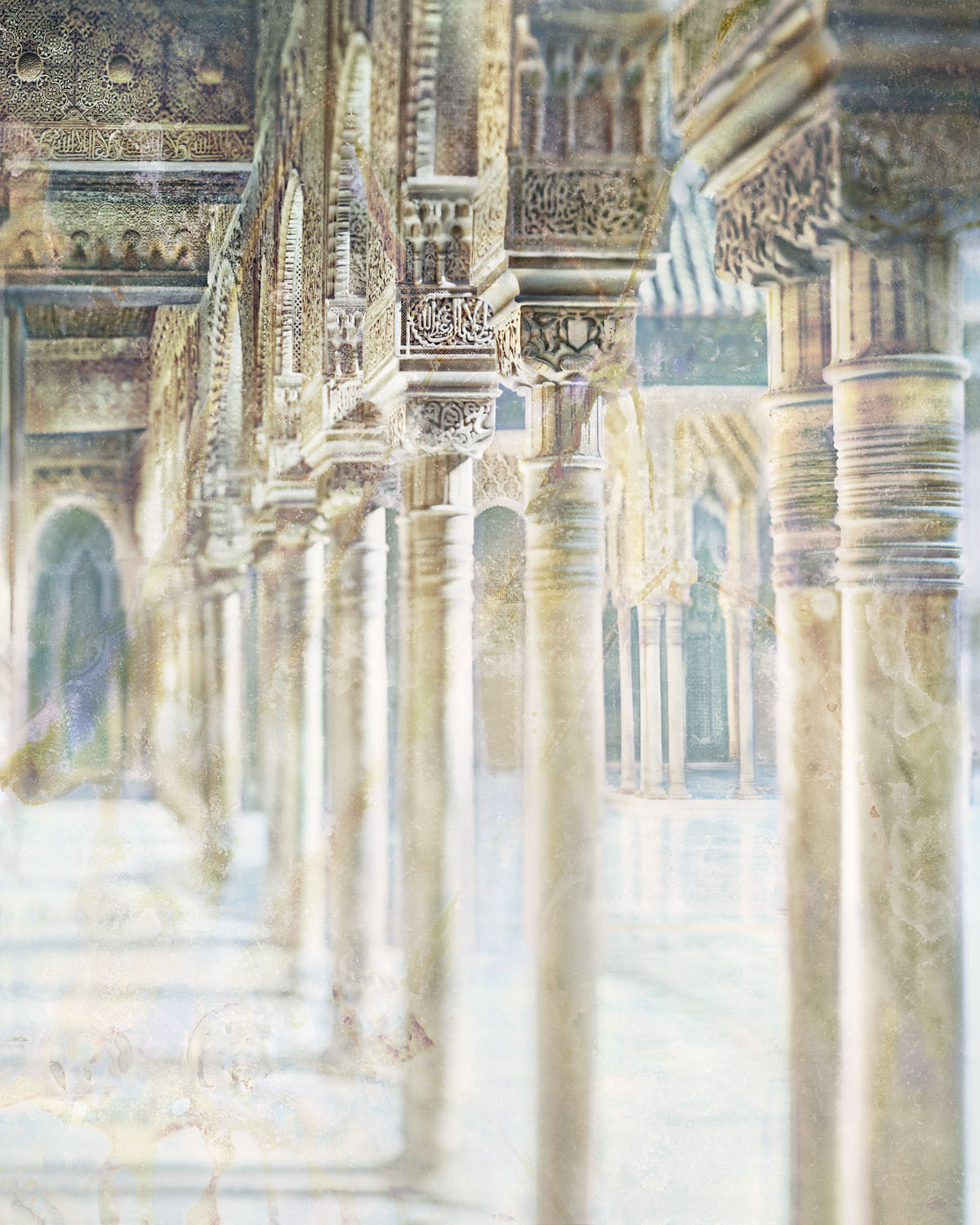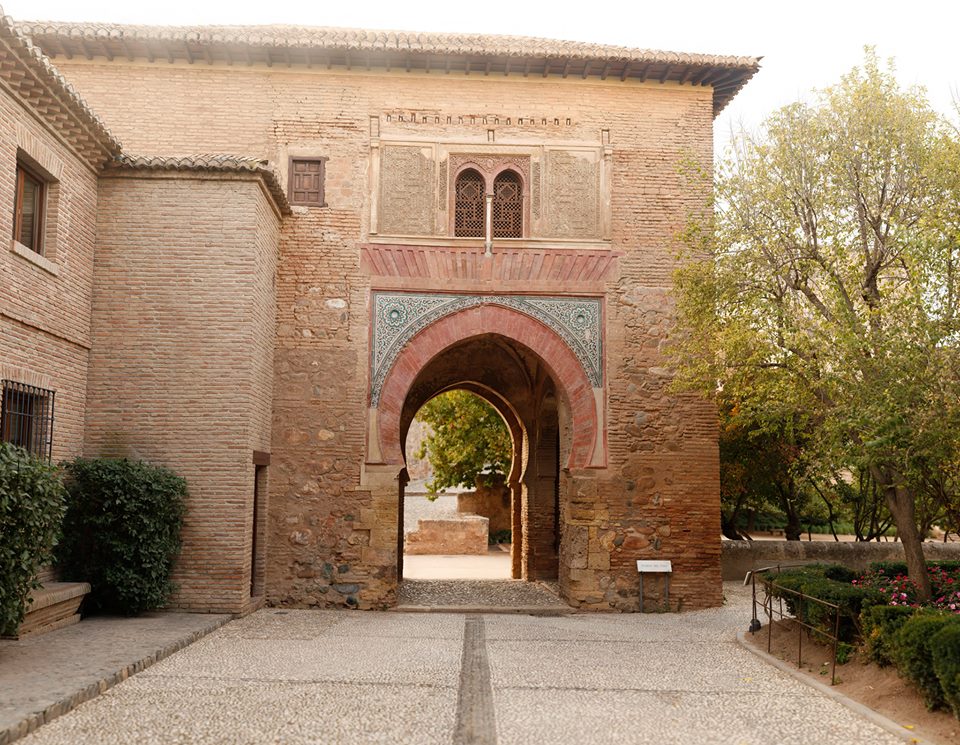 BACK
BACK
The Gate of Wine
The Gate of Wine serves as start and end in the itinerary of the visit of the Alcazaba.
 Make your selection to discover more places
Make your selection to discover more places
Because it was an inner gate, it provided direct access to the fortress, as opposed to the outer gates, which required more protection and were built as L-shaped passageways. Inside, however, there was room enough for benches for the guards that controlled all access to the fortress.
Architecturally one of the oldest structures in the Nasrid Alhambra , it was built during the time of the Sultan Muhammad III (1302-1309), although the decoration of both façades pertains to different periods
The door on the east side, carved in sand stone, probably belongs to the 13th century or the beginning of the 14th century, although the tombstone over the door lintel refers to Sultan Muhammad V, who ruled the fortress in the second half of the 14th century. This east façade was the outer side of the gate and, therefore, the traditional Islamic symbol of the key was engraved above the arch key.
The inner side, i.e. the west façade, even when it follows a similar structural pattern, was decorated during the second mandate of Sultan Muhammad V, more specifically after 1367, the date of the military campaigns of Jaen, Baeza and Ubeda. Remarkable are the beautifully decorated spandrels hanging from the arch, made up of dry-rope manufactured tiles, and the composition of the stucco walls that frame the upper floor’s window, and the rest of well-preserved polychromatic painting on the right side of the arch.

La Alhambra, a look from Fernando Manso
MORE INFORMATION
WASHINGTON IRVING AND THE ALHAMBRA
MORE INFORMATION
THE GATE OF BIBARRAMBLA. Historical report of the monument and its rediscovery
MORE INFORMATIONTHE EMPEROR´S CHAMBERS
MORE INFORMATION
The Council of Alhambra and Generalife will refund automatically the full amount of the bookings
MORE INFORMATION





 Contact
Contact


















